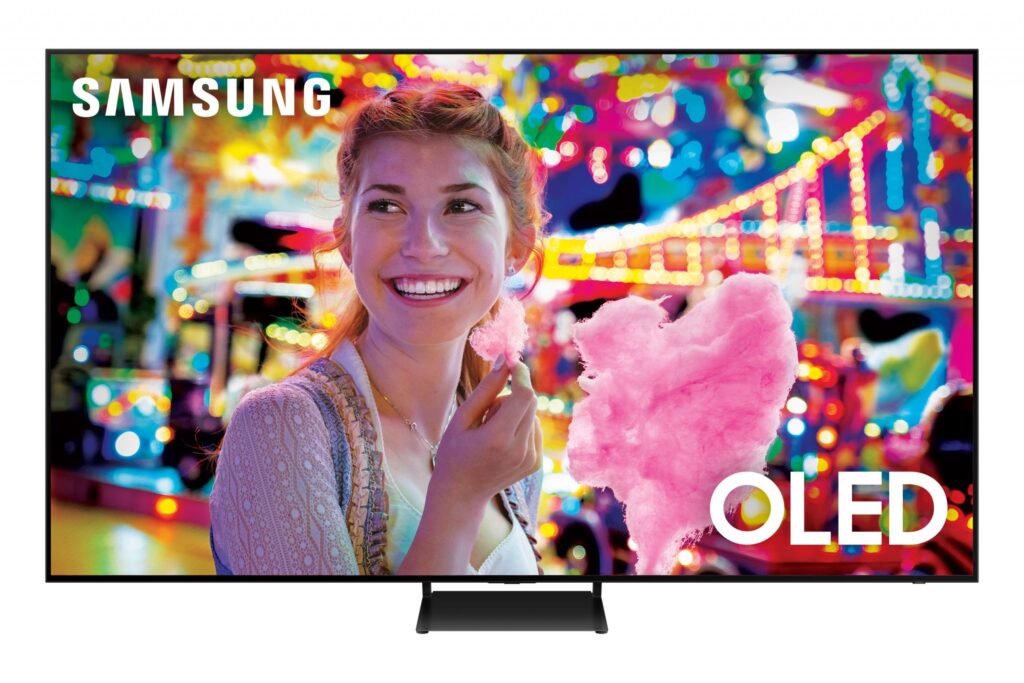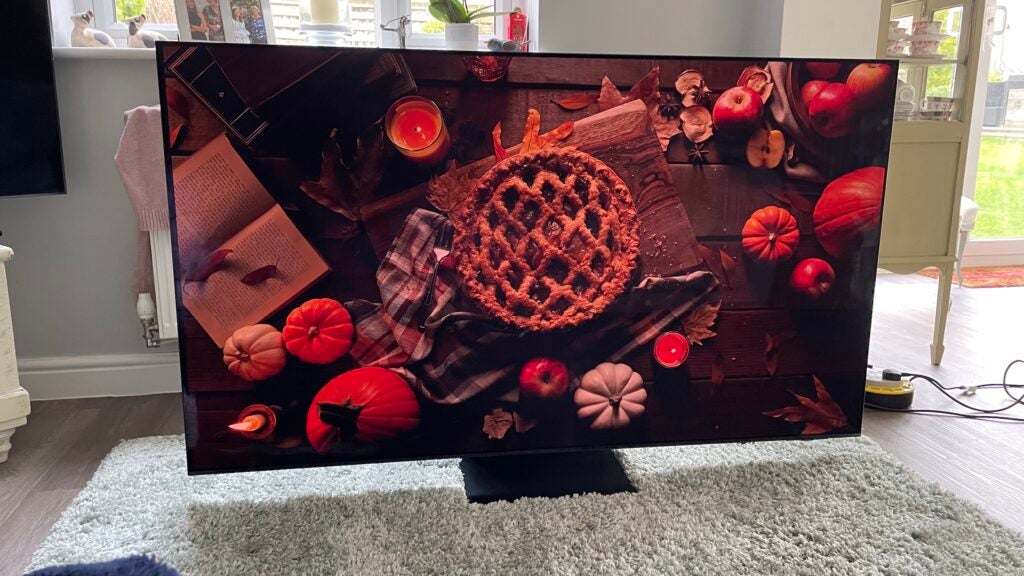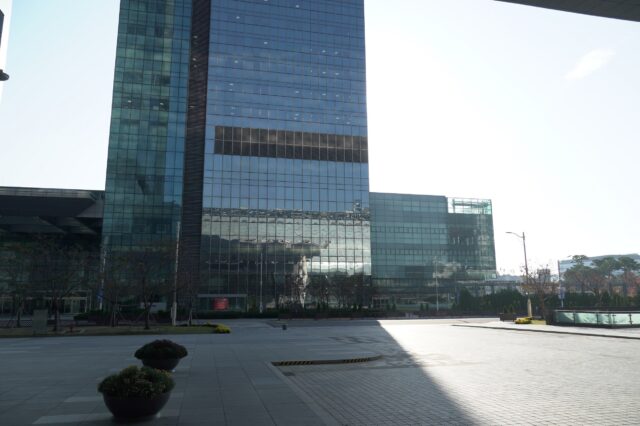It’s a new year, and if you work in the world of TVs, that means new models to gawp at.
At CES they’ll be several TV brands showcasing their plans for the year, from Hisense, to Roku, LG, Panasonic, TCL, and of course, Samsung.
It’s Samsung that I’ll be taking a closer look at with this preview. Having travelled to Korea in November 2023 to Samsung’s Digital City in Suwon, here’s what you can look forward to from its TVs in 2024 as it looks to cement its dominance for the 18th consecutive year.
They will be more massive TVs

2023 was something of a breakthrough year for massive screen sizes. 70+-inch TVs have become more popular, a profitable area for TV manufacturers and as such the competition has been hotting up as they look to snap up market share.
TCL has arguably been the most aggressive, but Samsung has always been pushing bigger screen sizes. For 2024, they’ll be unleashing 98-inch QN990D [sic], QN90D, QN80D, and DU9000 models. That’ll cover 8K all the way down to their affordable Crystal UHD series.
These models will benefit from extra processing in the form of Samsung’s super-sized Picture Enhancer for these tellies. And although these TVs are super-sized, Samsung is aiming to ensure they’ll be savings in terms of boxes with its slim packaging.
They won’t be the only Samsung TVs coming in big sizes. I was told that Micro LED will be available in 76-, 101-, and 124-inch sizes. When exactly they’ll be available to purchase, however, is still something of a mystery…
A smarter, more personalised Tizen interface
In my Sound & Vision column, I talked about how TV interfaces are becoming more important, not just to the end user experience but also to the bottom line. It’s all about “screens for every connected experience”.
Samsung is tackling this on two fronts. The first is to make the Tizen interface more personalised for its 2024 incarnation, reconfiguring its appearance to push up user engagement.
Unfortunately, I can’t show you any images or screenshots for anything in this article as I wasn’t allowed to take any, but an emphasis on app engagement, while TV Plus will also be receiving more care and attention.
The second method is licensing Tizen to other TV manufacturers. It already underwent a soft launch in 2023 as Samsung looks to expand Tizen and its ecosystem of devices. I wouldn’t necessarily expect TVs bearing Tizen that aren’t from Samsung in the UK or Europe, though – the target is southeast Asia and the Americas.
S95D QD-OLED to get brighter

Luminance has been a concern with WRGB OLED TVs, they aren’t able to reach as high, which can affect the range of colours they can display. Aside from LG’s MLA tech, QD-OLED has been the only display tech to offer super bright OLED pictures.
The 55-inch S95C I tested was able to reach 1200 nits of brightness, the 65S95C could hit 1400 nits. The new S95D will reach 1600 nits in its Movie mode, and that’s not the only improvement coming this year.
They’ll be a new anti-glare layer on this new model for better black levels in bright rooms. Brightness has been improved with subtitles too, so they should stand out more.
As a sign of Samsung showing its advantages with QD-OLED, I was shown a demonstration between the S95D and an LG OLED G3 whereby luminance overshoot – probably best described as pulsing levels of brightness near areas of darkness – was handled much better by the Samsung S95D on films such as Wonder Woman and Godzilla vs Kong.
It’s not a surprise, QD-OLED’s sub-pixel structure lends itself an advantage in this area, but it’s clear Samsung is flexing its muscles in its ‘cold’ OLED war with LG.
More Neo QLED TVs and better Mini-LEDs
Though Samsung’s mid-range Q80C offered better black levels than its predecessor, the Korean giant has upgraded to Q80C to Neo QLED status (QN80D), devising a new Mini-LED backlight too.
The backlight will utilize a ‘zig-zag’ structure, so while the level of brightness is expected to be the same, colours in the demo I saw were much stronger (reds especially). Black levels were better with less blooming, along with less noise and clipping in the darkest parts of the image.
Colours were also more accurate when compared to a professional mastering monitor. Samsung is viewing the QN80D as the volume driver for sales as it expands its Neo QLED range, and based on what I saw, it might be the Mini-LED to get if you’re not to keen to spend inordinate amounts.
More artificial intelligence

Samsung’s placing a big focus on artificial intelligence across its products. Its rumoured to be integrated tightly for its upcoming Galaxy S24 smartphone and they’ll be a bigger emphasis in its 8K TVs too.
A.I. will be used to enhance picture quality, to – in Samsung’s words – transfer the sense of realism and immersion through to the display.
A.I. will help upscale low-quality content in broadcasting and OTT apps, figuring out, and then focusing on, the main object of interest (what your eye is attracted to) through cognitive processing and improving fidelity.
Its Quantum Super Resolution feature has been upgraded to support 255 neural networks, with its ‘general’ model enhancing clarity, and its ‘face model’ creating clearer, softer lines and removing noise.
With sports, the A.I. Ball Detector uses separate MEMC processing for the ball and the players, avoiding flickering. They’ll also be one for the news tickers, which will use A.I. to detect scrolling text and stabilize it. These features worked well in the demo I saw.
They won’t be coming to the 4K TV range in 2024, however. And for purists, these features won’t be available in Movie or Filmmaker mode either.
An updated projector line-up
Not necessarily a TV, but I am able to say they’ll be new projectors for 2024. The Premiere 5 is a compact short-throw version like the models XGIMI offer. An impressive innovation is being able to scroll and navigate through touch controls, so you can tap on the surface the Premiere is beaming to and navigate the interface. Very cool.
There’ll be the Premiere 8K model with a screen size of up to 150-inches, 4000 lumens of brightness and a wireless One Connect box.
The Premiere 7 and 9 will be 4K models. HDR10+ is supported across all the projectors.











